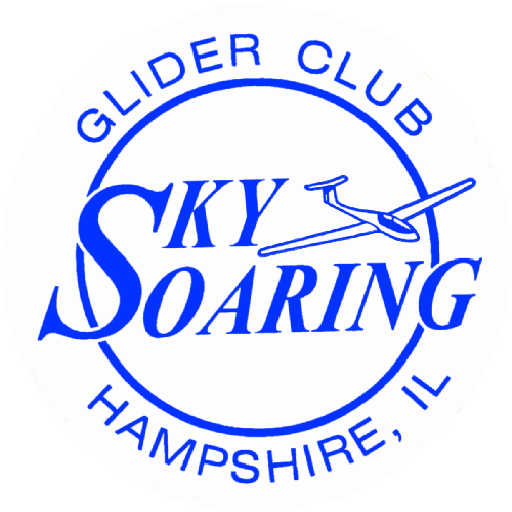Welcome to Sky Soaring › Forums › Restricted content › Runway Environment and Use
Tagged: runway layout
- This topic has 6 replies, 5 voices, and was last updated 4 years, 3 months ago by
 Gary Palumbo.
Gary Palumbo.
-
AuthorPosts
-
-
Friday, March 12th, 2021 at 10:28 am #10104
 Don GrilloKeymaster
Don GrilloKeymasterHello SSI Instructors,
Since their has been no feedback on the proposals I made, I am assuming that everyone is in agreement about:
- Moving the rwy 27 stop line from the fuel tank to the runway threshold markings.
- Designating taxiway, staging, gridding, towplane and run-a-way areas of our field.
- Retraining our CFI’s to teach our members to only taxi/roll the glider to the north side of the runway when a low amount of energy is achieved (for example: at a fast walk speed).
I will make the changes in the Policies and Procedures Manual on page nine and run it by the BOD for approval.
Sincerely,
Don Grillo
FCC -
Saturday, March 13th, 2021 at 9:50 am #10111
 Larry KaseParticipant
Larry KaseParticipantI sent this reply Wednesday,but it didn’t go out.
On the landing roll out, the safest time to deviate from the centerline is when firm directional control is available. At a brisk walk directional control has already been lost. A good technique is to move to the side while above 20 k at a shallow angle to the runway, parallel the runway. The inertia of the glider will keep it away from the flight line after directional control is lost. If a direction change is being made during the lower speed when directional control is lost the inertia of the tail will take the student into the flightline. That happened at SSI. The student broke the canopy with his forehead.
<div>The high energy landings are likely caused by inability to fly to a aimpoint.</div>
<div>Larry Kase</div> -
Wednesday, March 24th, 2021 at 9:34 pm #10199
 Geoff WeckParticipant
Geoff WeckParticipantHi Don,I agree that we need to change the way we stage/grid gliders so that we have someplace for run away landing gliders to go. Several years ago Dale Watkins came up with a solution that was never implemented. We tried it and it seemed to work. Basically, a glider was not gridded until ready for tow which left plenty of overrun space for someone landing really long. Moving the “beer” line to the runway end would be an improvement as well but may not be far enough east versus the gas tank.The best solution to this would simply be to eliminate out and back operations. Geoff
-
Wednesday, March 24th, 2021 at 9:34 pm #10200
 Larry KaseParticipant
Larry KaseParticipantOn the landing roll out, the safest time to deviate from the centerline is when firm directional control is available. At a brisk walk directional control has already been lost. A good technique is to move to the side while above 20 k at a shallow angle to the runway, parallel the runway. The inertia of the glider will keep it away from the flight line after directional control is lost. If a direction change is being made during the lower speed when directional control is lost the inertia of the tail will take the student into the flightline. That happened at SSI. The student broke the canopy with his forehead. The high energy landings are likely caused by inability to fly to a aimpoint.
Larry Kase
Sent from my iPad
-
Wednesday, March 24th, 2021 at 9:34 pm #10201
 Dennis BurkeParticipantI’m not an SSI instructor, but did have a comment about Landing Ops when a day’s staff level is minimal. Often a glider lands, and has not cleared RW to north edge ( low-energy ldg), and a Golf Cart & staff is not out there to help exit ASAP for other traffic in pattern.I was wondering if 1 golf cart should be kept close to the new roll-stop area before the End markers, …especially for 27 ldgs. If the pilot is alone, is that pilot allowed to move his/her glider off the RW by themselves?
Dennis BurkeParticipantI’m not an SSI instructor, but did have a comment about Landing Ops when a day’s staff level is minimal. Often a glider lands, and has not cleared RW to north edge ( low-energy ldg), and a Golf Cart & staff is not out there to help exit ASAP for other traffic in pattern.I was wondering if 1 golf cart should be kept close to the new roll-stop area before the End markers, …especially for 27 ldgs. If the pilot is alone, is that pilot allowed to move his/her glider off the RW by themselves? -
Wednesday, March 24th, 2021 at 9:34 pm #10202
 Gary PalumboParticipant
Gary PalumboParticipantSorry I didn’t get back to you sooner. I think your ideas are good
Sent from my iPhone
-
-
AuthorPosts
- The forum ‘Restricted content’ is closed to new topics and replies.
